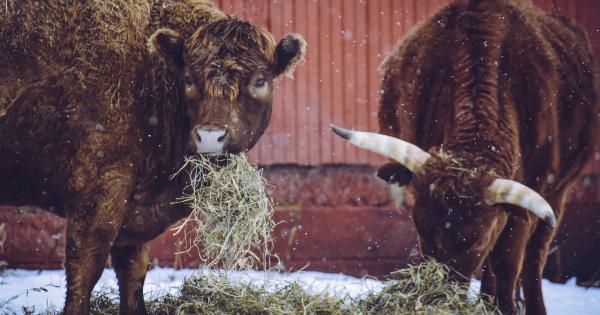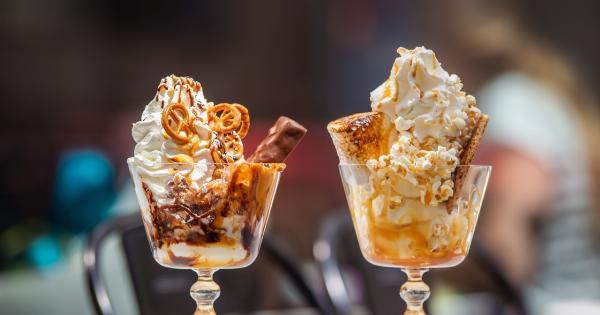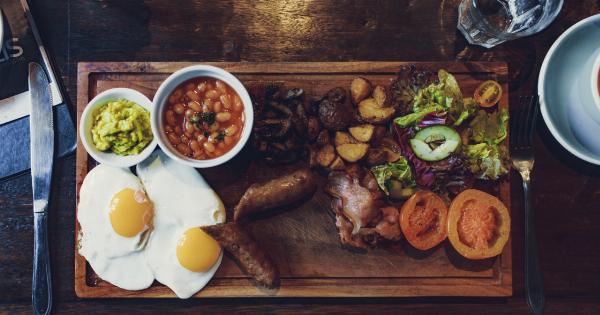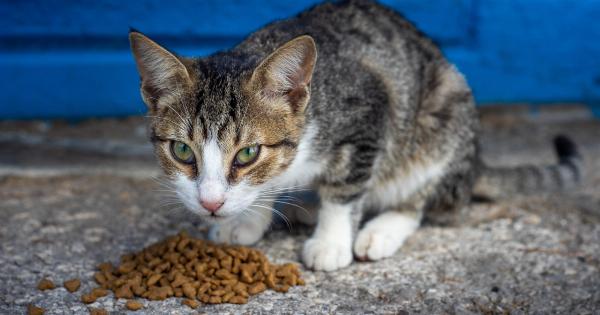Food is supposed to nourish and provide energy to the body. However, sometimes, food can cause harm to our bodies when it is contaminated with harmful microorganisms.
These microorganisms can cause food poisoning, which can range from mild to severe symptoms such as diarrhea, vomiting, and stomach cramps.
The following are 30 foods that you should be cautious of to avoid food poisoning, and ways to prevent contamination:.
1. Raw and Undercooked Eggs
Raw and undercooked eggs may contain salmonella bacteria, which can cause food poisoning. To avoid contamination, make sure that eggs are fully cooked before consumption or use pasteurized eggs in recipes that call for raw or undercooked eggs.
You should also avoid licking raw cookie dough or cake batter, as these can contain raw eggs.
2. Unpasteurized Milk and Dairy Products
Raw milk and dairy products can contain harmful bacteria such as E. coli, Salmonella, and Listeria. To avoid contamination, consume only pasteurized milk and dairy products.
3. Raw and Undercooked Meat
Raw and undercooked meat may contain harmful bacteria such as E. coli, Salmonella, and Campylobacter. To avoid contamination, cook meat to the appropriate temperature.
Use a meat thermometer to ensure that the internal temperature of the meat reaches at least 165°F (74°C) for poultry, 160°F (71°C) for ground beef, and 145°F (63°C) for beef, pork, lamb, and veal steaks and roasts.
4. Raw and Undercooked Seafood
Raw and undercooked seafood may contain harmful bacteria such as Vibrio and Salmonella. Seafood should be cooked to a safe temperature, which varies depending on the type of seafood.
A general rule of thumb is that seafood should be cooked until it is opaque and firm. Shrimp, lobster, and scallops should be cooked until they turn pink, and oysters and clams should be cooked until their shells open.
5. Raw Sprouts
Raw sprouts such as alfalfa, clover, radish, and bean sprouts can be a breeding ground for harmful bacteria such as Salmonella and E. coli. To avoid contamination, cook sprouts thoroughly before consumption, or avoid eating them altogether.
6. Raw Honey
Raw honey may contain spores of the bacterium Clostridium botulinum, which can cause botulism. To avoid contamination, consume only pasteurized honey.
7. Raw Fruits and Vegetables
Raw fruits and vegetables can be contaminated with harmful bacteria such as E. coli and Salmonella. To avoid contamination, wash fruits and vegetables thoroughly before consumption. You can also peel or cook the produce to reduce the risk of contamination.
8. Canned Foods
Canned foods can be contaminated with harmful bacteria such as Clostridium botulinum, which can cause botulism. To avoid contamination, store canned foods in a cool and dry place, and discard cans that are dented or bulging.
Canned foods should also be heated to the appropriate temperature before consumption.
9. Deli Meats
Deli meats can be contaminated with harmful bacteria such as Listeria. To avoid contamination, consume deli meats that are freshly sliced or heated to the appropriate temperature before consumption.
10. Soft Cheeses
Soft cheeses such as feta, brie, and camembert can be contaminated with harmful bacteria such as Listeria. To avoid contamination, consume only pasteurized soft cheeses.
11. Raw Shellfish
Raw shellfish such as oysters, clams, and mussels can be contaminated with harmful bacteria such as Vibrio. To avoid contamination, cook shellfish to a safe temperature and discard any that do not open during cooking.
12. Unwashed Hands
Unwashed hands can transfer harmful bacteria to food. To avoid contamination, wash your hands with soap and water before handling food and after using the bathroom or handling pets or garbage.
13. Cross-Contamination
Cross-contamination can occur when harmful bacteria from one food item is transferred to another food item.
To avoid contamination, wash cutting boards, utensils, and countertops thoroughly with soap and hot water after each use, and use separate cutting boards for raw meat, poultry, and seafood.
14. Leftovers
Leftovers that are not stored properly can be a breeding ground for harmful bacteria. To avoid contamination, refrigerate leftovers within two hours of cooking, and consume them within three to four days.
15. Green Leafy Vegetables
Green leafy vegetables such as spinach and lettuce can be contaminated with harmful bacteria such as E. coli and Salmonella. To avoid contamination, wash green leafy vegetables thoroughly before consumption.
16. Raw or Undercooked Beans
Raw or undercooked beans contain a toxin called lectin, which can cause vomiting, diarrhea, and stomach cramps. To avoid contamination, cook beans thoroughly before consumption.
17. Food from Street Vendors
Food from street vendors can be contaminated with harmful bacteria if it is not stored, cooked or prepared properly.
To avoid contamination, choose vendors that have a clean and hygienic setup, and only consume food that has been cooked to the appropriate temperature.
18. Fermented Foods
Fermented foods such as sauerkraut and kimchi can be contaminated with harmful bacteria such as Listeria. To avoid contamination, consume only properly fermented foods, or make your own at home using safe food handling practices.
19. Fruit Juices
Fruit juices can be contaminated with harmful bacteria such as E. coli. To avoid contamination, consume only pasteurized fruit juices.
20. Household Pets
Household pets can transfer harmful bacteria to food. To avoid contamination, do not allow pets in the kitchen or near food preparation areas, and wash your hands thoroughly with soap and water after handling pets.
21. Salad Bars
Salad bars can be a breeding ground for harmful bacteria if food is not stored or handled properly. To avoid contamination, choose salad bars that look clean and well-maintained, and opt for freshly prepared salads.
22. Ice Cream
Ice cream can be contaminated with harmful bacteria such as Listeria. To avoid contamination, consume only pasteurized ice cream from a reputable source.
23. Potato Salad
Potato salad can be contaminated with harmful bacteria if it is not stored or handled properly. To avoid contamination, store potato salad in the refrigerator, and consume it within three to four days of preparation.
24. Stuffing/Dressing
Stuffing or dressing can be a breeding ground for harmful bacteria if it is not stored or handled properly. To avoid contamination, cook stuffing or dressing separate from the turkey, and store it in the refrigerator.
25. Sushi
Sushi can be contaminated with harmful bacteria if it is not prepared or stored properly.
To avoid contamination, choose reputable sushi restaurants, and only consume sushi that has been cooked or prepared according to appropriate food safety standards.
26. Herbal Supplements
Herbal supplements can be contaminated with harmful bacteria or other toxins. To avoid contamination, choose supplements from reputable sources, and follow the recommended dosage and storage instructions.
27. Sea Salt or Raw Salt
Sea salt or raw salt can contain harmful bacteria and toxins. To avoid contamination, choose commercial table salt that has been iodized and sterilized.
28. Spoiled Food
Spoiled food can be a breeding ground for harmful bacteria. To avoid contamination, check the expiration date and appearance of food before consumption, and discard any food that appears moldy, slimy, or has an unusual odor or taste.
29. Pesticide Contaminated Produce
Produce that has been sprayed with pesticides can contain harmful toxins. To avoid contamination, choose organic produce or wash and peel produce thoroughly before consumption.
30. Contaminated Water
Contaminated water can contain harmful bacteria and parasites. To avoid contamination, drink only filtered or bottled water, especially when travelling to areas with poor sanitation or unsafe water sources.
Conclusion
Food poisoning can be a serious health concern that is preventable with proper food handling and preparation. By following the tips and guidelines outlined above, you can enjoy a variety of foods without risking exposure to harmful bacteria or toxins.






























